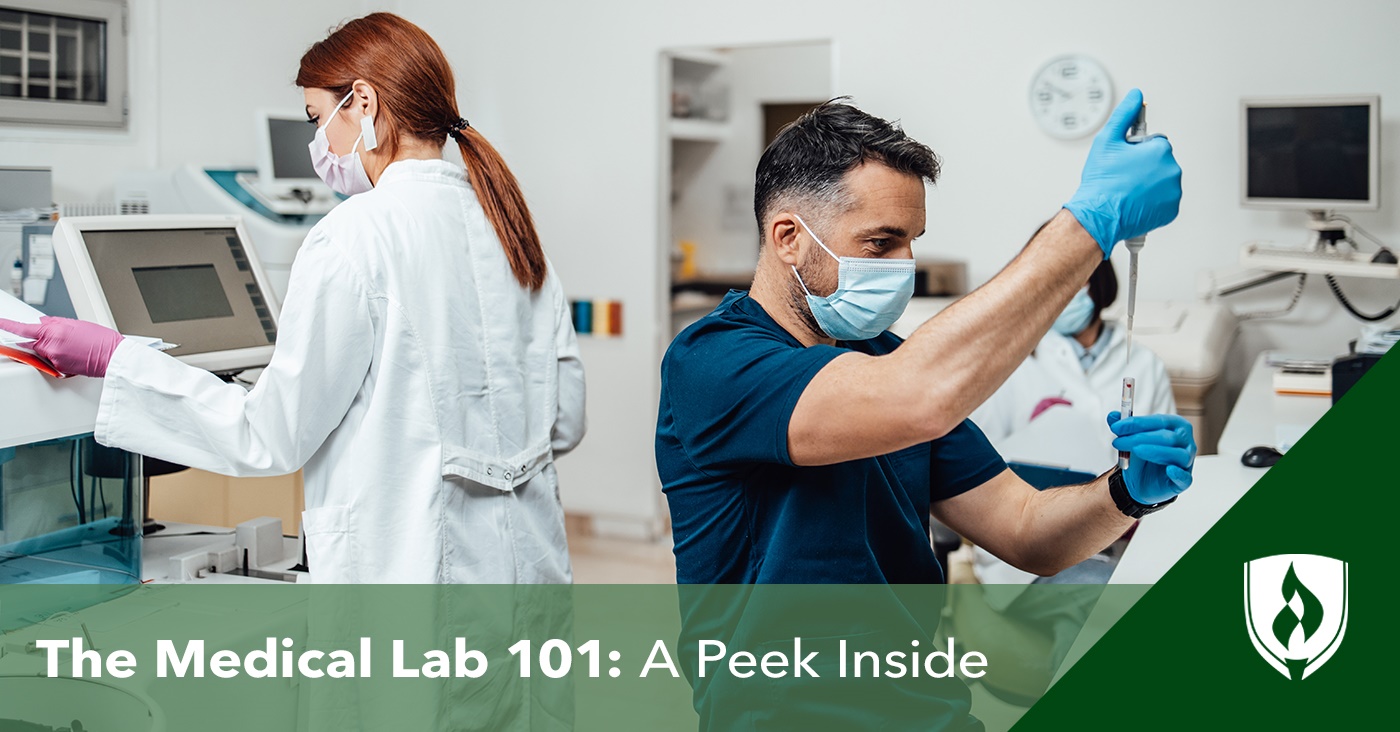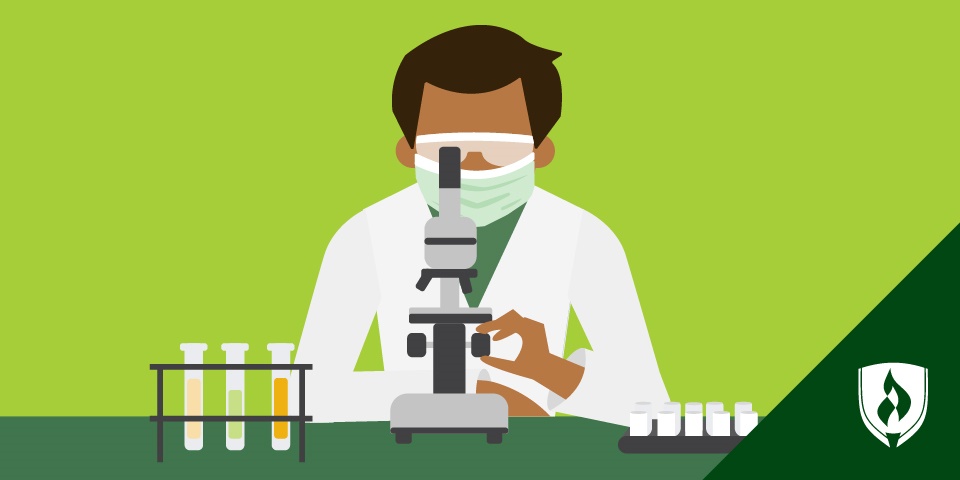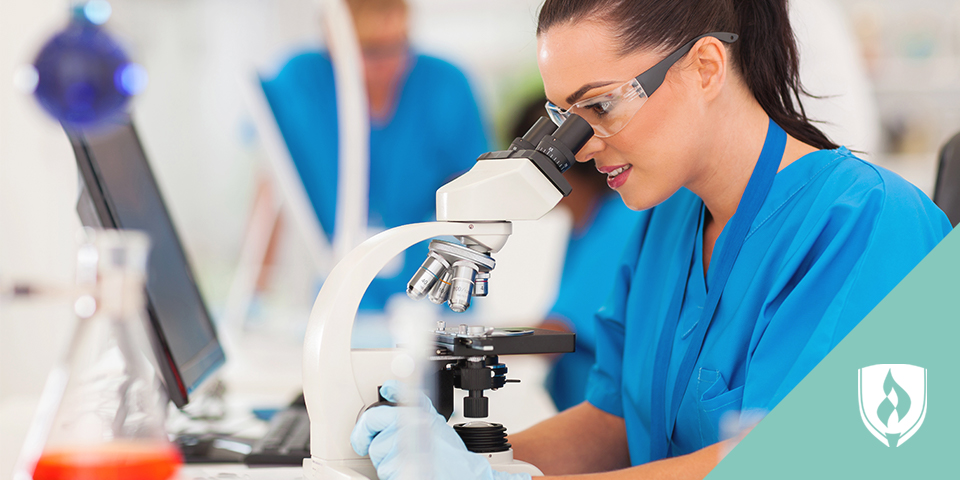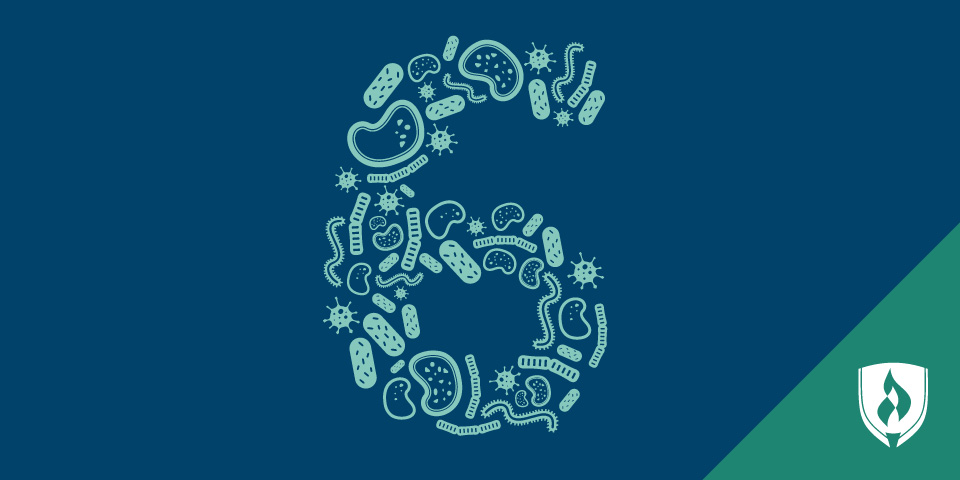
We’ve all seen TV shows and movies with sleek, futuristic laboratories, where forensic investigators solve crimes by looking into microscopes and courageous scientists search for cures to diseases by swirling mysterious liquids in flasks. In these labs, all questions get answered just before the credits roll. But the reality of a medical lab is much different than what we see in popular media.
If you’ve ever wondered what “the lab” is really like and what the healthcare professionals inside them are working on, you’re in the right place. We’ve asked medical lab workers to provide a sneak peek inside what really goes on in a medical lab.
What’s it like inside a medical lab?
While the idea of laboratories might bring to mind old tropes about mad scientists heating brightly colored mystery concoctions in beakers, the reality is much more practical. D’Vaughn House, a clinical research coordinator at the University of Cincinnati Infection Diseases Division, says that while all medical labs are different, there are some common features.
“When you enter, you’ll see containers full of supplies, like color-coded draw tubes, butterfly needles and tourniquets,” House explains.
Of course, entering a medical lab isn’t typically an option for most.
“Medical labs can feel like a fortress because before you enter them, you must be credentialed in some way either through education or experience,” House says.
Once inside the lab, you’ll often see—and may be overwhelmed by—the number of supplies.
“Testing agents, shipping boxes and biohazard labels lining the shelves,” House says. “Filing cabinets wrapped around the entire room.” House says medical labs often feel cluttered because staff need all the relevant supplies to be easily accessible while they work.
“Staff must be diligent about organization and cleanliness because it’s easy to feel like the walls are closing in on you,” House says.
Personal protective equipment (PPE) such as gloves, masks and goggles are generally required in medical labs. Standard lab equipment like microscopes, pipettes, hotplates, lab glassware, chemistry analyzers, incubators, testing kit supplies, centrifuges and autoclaves are also common. Freezers and refrigerators are also often used to store samples at specific temperatures.
As electronic health records (EHR) are now the norm in healthcare, medical labs generally have computers where staff can access and update patient information with test results. Knowledge of EPIC, an electronic health record software system used at many major hospitals, is often required.
Zhe Song, a lab supply manager at ABD who has worked with labs in academia and hospitals, compares medical labs to a place all of us can imagine.
“To make it simple to understand, it’s like a kitchen,” Song says. “You get ingredients, labwares and you cook stuff. But the procedures are much more complicated and can take a much longer time.”
What happens in a medical lab?
Unlike many kitchens, the medical lab generally has a lower noise level—there’s no head chef screaming about a missed ticket.
“Medical labs are quiet because they operate kind of like an assembly line,” House says. “You need to focus on what you are doing.”
The variety of work medical labs conduct is nearly infinite, according to Song: “In hospitals, medical labs support things like blood testing for common diseases, infant screening for phenylketonuria and pathology exams of tumors.”
As an example, House walks through what a common medical lab procedure could look like: an HIV test.
“Staff will need to know how to draw blood and use a centrifuge to separate the plasma, which is used for testing from the rest of the blood,” House says. “Then a courier will send the specimen to a central facility where technicians will need to know how to use an All Scripts database and ARCHITECT HIV Ag/Ab testing machine.”
In order to keep compliant with lab standards, House is also required to keep current on a variety of trainings.
“My lab manager requires that I update my blood-borne pathogen and hazardous communication training on a regular basis,” House says.
Medical labs: Crucial players in modern healthcare
“It’s hard to imagine a world without medical labs,” Song says, citing the detrimental impact that the global testing supply shortage had on the COVID-19 pandemic. House cannot imagine healthcare without the work of medical labs, either.
“Our society is built on the collective acceptance of scientific processes,” House explains. “In the health care system, doctors typically cannot diagnose a major illness without testing because insurance companies or governments use medical labs to know how to make fact-based decisions. At all levels of health, medical labs serve as the most reliable fact-checking mechanism. Because information can travel instantaneously, demand for fact checking is ever increasing.”
Increasingly, House adds, tasks associated with medical labs are becoming automated. “Artificial intelligence is taking over labs these days, so you will always encounter complex databases and machines,” House says.
But machines can only do so much—the people working with them will always have to take the lead. Finding critical answers that impact people’s health requires medical lab professionals to be detail-oriented, analytical and patient.
“It’s hard shaking that feeling of perfectionism,” House says. “Major decisions related to people’s long-term health and wellbeing squarely rest on the information available to doctors and insurance companies.”
Every step of a lab procedure matters, but not just because of what’s at stake. Those who occupy a medical lab need to be precise in their actions.
“Because the nature of labs is fact finding, the moment you break lab protocol, you open yourself up to mistakes and waste,” House says. “No one can train you to be ready for everything that could go wrong in a lab, so you must possess coping skills that allow you to learn from your mistakes.”
Getting started as a medical lab professional
If you’re interested in working in a medical lab, one common entry point for working in a lab is by becoming a medical lab technician. The Medical Laboratory Technician program at Rasmussen University offers an Associate’s degree that prepares students for the Medical Laboratory Technician (ASCP) certification exam. Medical labs that conduct research on diseases and treatment protocols also often employ staff with Bachelor’s, Master’s and doctoral degrees—there’s a wide range of academic backgrounds to be found in most labs.
Think you’d be a good a fit for this behind-the-scenes healthcare job? If you are looking for health sciences work that directly impacts people everywhere, a medical lab career might be a great place to start. To learn more details about the role of a medical lab technician, check out our article “What Does a Medical Laboratory Technician Do?”




